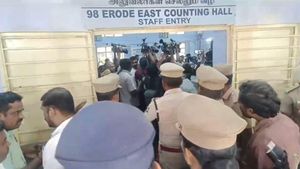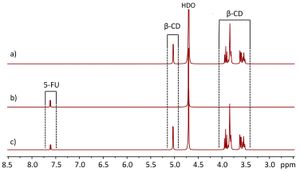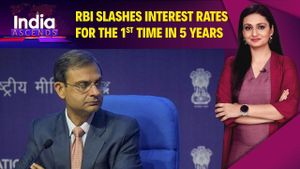The results of the Delhi Assembly elections are making headlines as counting commenced on February 8, 2025, following the voting held on February 5. With the Aam Aadmi Party (AAP) aiming for another term, the Bharatiya Janata Party (BJP) struggling to end its 26-year drought and Congress trying to reclaim its position after being out of power for the last decade, the stakes couldn't be higher.
Initial trends have started to roll out as postal ballots were counted first at 19 counting centers across the capital. According to early reports by ABP News, the BJP is leading the charge against its rivals, displaying significant gains. "Initially, the BJP is showing lead over AAP and Congress," noted sources, reflecting the sentiments surrounding this election.
Notably, key constituencies like New Delhi, which features AAP’s Arvind Kejriwal, and Kalkaji, with Atishi representing AAP, are under intense scrutiny. Analysts have pointed out the fierce competition among major political figures, quoting polling analysts who state, "The competition is fierce, especially on key seats like New Delhi and Kalkaji." These are not just strategic sections but are considered fundamental to all parties' broader ambitions.
The voting turnout for this election was around 60.5%, slightly lower than its 2020 counterpart, which had recorded 62.82%. While the AAP secured 62 out of 70 seats back then, expectations were varied this time around as multiple exit polls painted mixed prospects. Some polls suggested BJP could potentially grasp the majority, whereas others pointed to AAP's lead.
For years, AAP has dominated the Delhi political scene, securing victory since 2015. Yet, the BJP, desperate to regain its foothold, has focused its campaign on emphasizing socio-economic issues through local narratives. This rhetoric has been buoyed by claims of citizen dissatisfaction with the AAP's governance. “Some exit polls predict AAP could secure the highest number of seats,” revealed forecasting data from ECI, hinting at the unpredictable nature of this contest.
Within the AAP camp, Kejriwal’s stakes are exceptionally elevated—particularly on his home turf, New Delhi, where he hopes to solidify his legacy. The narrative surrounding this constituency is exacerbated by former CM Sheila Dikshit’s son, Sandeep Dikshit, running for Congress, making this not just a battle of political parties but of personal histories.
The contest is compelling not just for AAP and BJP but involves Congress leaders, including Sandeep Dikshit and Alka Lamba, who seek to position themselves for whatever fallout arises from this fiercely fought election.
Reports have started indicating significant flips on traditionally secure seats such as Okhla and Ballimaran, underlining the turmoil within established voter bases. The Ballimaran seat, held by AAP minister Imran Hussain, has witnessed promising leads for the BJP’s Kamal Bagdi and Congress’s Haroon Yusuf, observers note.
With the election results, many voters wonder what these developments mean for the overall political climate of Delhi. Will the BJP reclaim its historical standing, or will AAP manage to fend off the challenges and continue its dominant streak? There's also speculation around potential alliances and shifts within these factions as results manifest.
Not merely is the outcome material for habitual followers of the Regional Assembly; it serves as barometer for parties’ broader national aspirations as well. The state-level performance might dictate campaign strategies leading to future elections at larger scales.
The coming hours are set to offer clarity. Reports suggest around 43 seats are showing BJP leads, followed closely by AAP at 23 and Congress with at least 1 seat according to early forecasts.
The political future for Delhi remains closely tied to these 2025 results, with parties eager to claim the candidacy and the future households are yearning for.
With live updates pouring through counting reports, the anticipation grows as electoral dynamics shift even within hours. Each party’s response to the trends will shape the next phase of their campaign and test their support among the electorate. The final results, expected later today, will likely have far-reaching repercussions for its political figureheads and ambitious goals.



